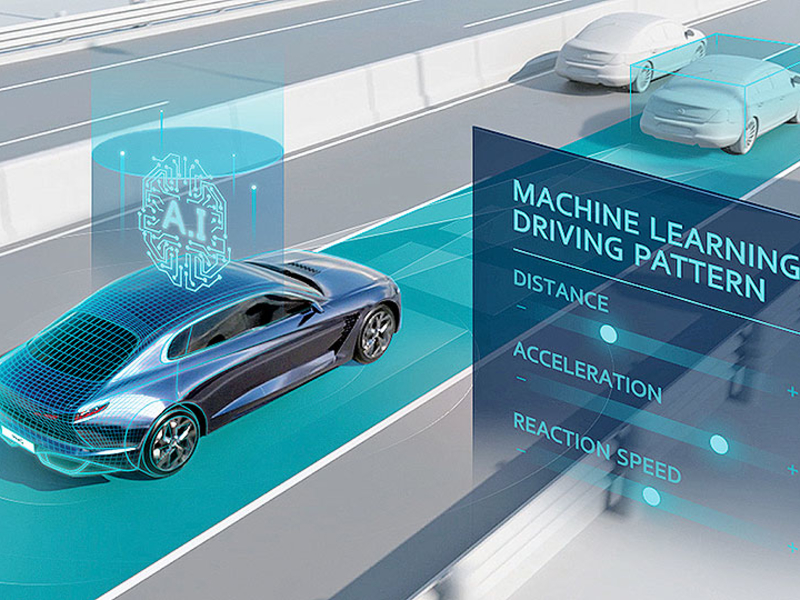
Many drivers’ first experience with an advanced driver- assistance system is adaptive cruise control, which started gaining popularity in the early 2000s. Along with lane-keeping assist and automatic emergency braking, adaptive cruise has helped people realize that someday, cars might just drive themselves.
The technology has become so pervasive that, according to AAA, it’s marketed under at least 20 unique names.
With adaptive cruise control, the driver sets the desired cruising speed, and a radar or camera system automatically adjusts that speed so that the car stays a safe distance from the vehicle ahead.
Now, Hyundai has found a way to incorporate even more intelligence.
In October, the automaker said it had developed a version of its Smart Cruise Control system that uses machine learning to factor in individual driving patterns and habits. “Through machine learning, Smart Cruise Control autonomously drives in an identical pattern as that of the driver,” Hyundai said in a news release.
Sensors constantly accumulate driving information, enabling the car to learn, for instance, if the driver tends to stay farther away from the vehicle ahead when in the fast lane but maintain a shorter distance in slow city driving. It will also learn how a driver may accelerate differently depending on the circumstances.
But the system also knows where to draw the line. It is programmed “specifically to avoid learning unsafe driving patterns, increasing its reliability and safety,” Hyundai says.